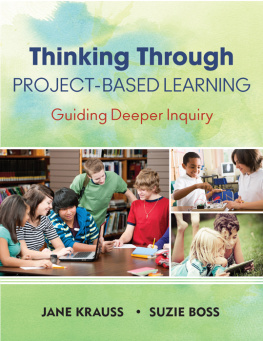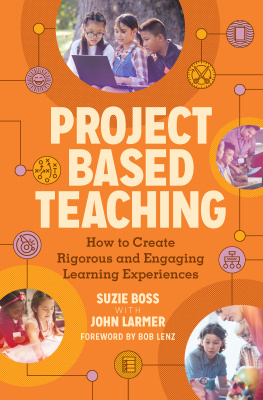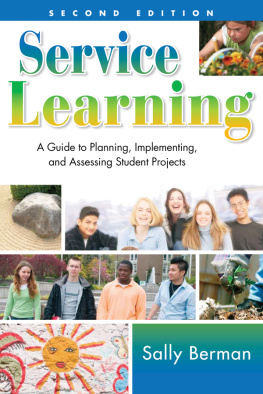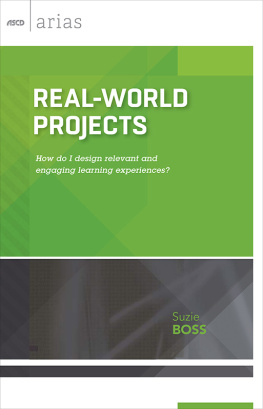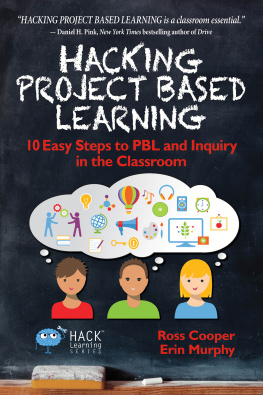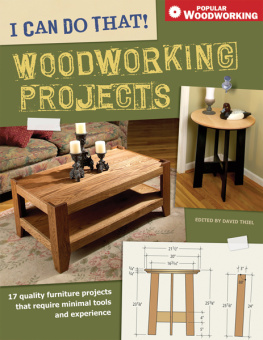

FOR INFORMATION:
Corwin
A SAGE Company
2455 Teller Road
Thousand Oaks, California 91320
(800) 233-9936
www.corwin.com
SAGE Publications Ltd.
1 Olivers Yard
55 City Road
London EC1Y 1SP
United Kingdom
SAGE Publications India Pvt. Ltd.
B 1/I 1 Mohan Cooperative Industrial Area
Mathura Road, New Delhi 110 044
India
SAGE Publications Asia-Pacific Pte. Ltd.
3 Church Street
#10-04 Samsung Hub
Singapore 049483

Acquisitions Editors: Debra Stollenwerk and
Associate Editor: Desire Bartlett
Editorial Assistant: Mayan White
Permissions Editor: Adele Hutchinson
Project Editor: Veronica Stapleton
Copy Editor: Kim Husband
Typesetter: C&M Digitals (P) Ltd.
Proofreader: Dennis W. Webb
Indexer: Sheila Bodell
Cover Designer: Karine Hovsepian
Copyright 2013 by Corwin

All rights reserved. When forms and sample documents are included, their use is authorized only by educators, local school sites, and/or noncommercial or nonprofit entities that have purchased the book. Except for that usage, no part of this book may be reproduced or utilized in any form or by any means, electronic or mechanical, including photocopying, recording, or by any information storage and retrieval system, without permission in writing from the publisher.
All trade names and trademarks recited, referenced, or reflected herein are the property of their respective owners who retain all rights thereto.
Printed in the United States of America
A catalog record of this book is available from the Library of Congress.
ISBN: 9781452202563
This book is printed on acid-free paper.
13 14 15 16 17 10 9 8 7 6 5 4 3 2 1
Preface

W hen Jane was a high school student, her history class took a field trip to a historical Western town located about 50 miles from her school. At the local museum, she and her classmates followed a docent from exhibit to exhibit. They wandered among Native American artifacts, a display about Chinese miners and gold prospecting, and collections of 19th-century housewares, toys, and farming implements. After the tour, students were free to stroll the citys wooden boardwalks, visit tourist shops, and buy treats at an old-time soda fountain. The day stands out as a fond high school memory when Jane looks back, but not because of any academic content she learned. The field trip was disconnected from what was happening back in the classroom.
As an adult and veteran teacher, Jane happened to revisit the same town. This time, she and her friends wandered off the beaten path and found themselves at the local pioneer cemetery. Many aspects of that place piqued their curiosity. They noticed how graves were organized into separate sections depending on religious affiliation, with one particular section sporting the largest and most ornate headstones. They wondered why so many gravestones were inscribed with 1918 as the year of death. Even though Chinese laborers made up a large part of the population in the towns early years, there was a dearth of Chinese graves. Why was this so?
Wearing her project-based learning hat, Jane couldnt help but imagine what a different experience she and her classmates might have had if they had started their tour at that cemetery. They would have been full of questions by the time they arrived at the museum. Chances are they would have ended their visit with a deeper understanding of pioneer history and a desire to learn more. They would have been primed for an engaging and academically meaningful project-based learning experience.
LEARNING THAT STICKS
At the start of workshops we lead on PBLproject-based learningwe often ask teachers to recall a significant memory from their school days. As you launch into this book with us, take a moment to conjure up your own recollections. Think back to your school days and quickly (without filtering!) focus on an especially vivid, sticky memory.
How would you classify your memorywas it academic, social, extracurricular, or interpersonal in nature? Perhaps it involved a field trip, guest speaker, performance, or other novel event? Maybe it was purely social. In hindsight, can you tell whether this experience contributed to any enduring understanding? What did you take away from it?
Take another moment to imagine your current students, years from now, looking back on their K12 education. Which of todays experiences do you expect will have staying power for them? Will they remember events that were fun because they were a break from the regular school day or experiences that whetted their curiosity and engaged them as thinkers and learners? Can you imagine any of their experiences becoming a springboard for lifetime of curiosity about the world around them?
FINDING AND FILLING THE GAPS
We know from experience that project-based learning has the potential to create powerfuland memorablelearning experiences for students. We also recognize that it can be hard to extract the full benefits of PBL. In our previous book, Reinventing Project-Based Learning, we focused on helping teachers prepare for projects that connect to real-world issues and integrate technology to maximize learning. Since that publication in 2007, our interactions with many educatorsin the United States and internationallyhave convinced us that theres a need to go deeper with advice about doing projects.
This book is designed to support teachers, school leaders, and professional learning communities that are looking for strategies to guide the implementation of projects. We know this is a fast-growing audience, including both PBL veterans and newcomers to the project approach.
A number of factors are helping PBL to gain traction as a key teaching and learning strategy, including:
New standards that set more challenging learning goals than those of the inch-deep, mile-wide traditional curriculum. In the United States, Common Core State Standards present learning objectives that address big ideas in a more holistic and interdisciplinary way. This new approach to standards aligns with the philosophy and best practices of project-based learning.
Continuing call for students to develop 21st-century skills that will prepare them for college, careers, and future life challenges. The Framework for 21st Century Skills calls for students to develop mastery in the 4 Cs: communication, collaboration, creativity, and critical thinking. We cant expect students to master these essential skills for the future if they dont start gaining experience with them during their K12 years. PBL offers arguably the best way to develop these 21st-century skills.
Growing networks of schools that are adopting PBL as a wall-to-wall strategy for teaching and learning. These schools have been serving as laboratories for developing best practices in PBL. Many are eager to share field-tested resources and classroom success stories, paving the way for others to get a faster start with project-based learning.

